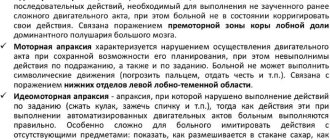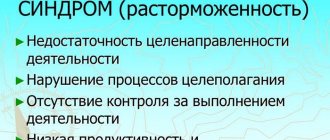Cortical dysarthria is considered to be disorders in the cerebral cortex of the brain that affect the speech function of the body. A person loses the ability to speak separately, and the pace of conversation may be lost. The patient can replace some sounds with his own. At the same time, the semantic part of the sentence remains true, since a person is capable of thinking. Diagnosis is carried out by a speech therapist and a neurologist. Additional diagnostic tests may also be done to confirm brain problems. The problem is treated with massage, speech therapist and psychologist. It is also important to eliminate the cause of the problem.
Causes of cortical dysarthria
The main nuances of the disease have already been described. You need to understand why exactly the problem occurs. The cause is a disruption in the functioning of those areas in the brain that are responsible for the tongue, lips, palate, and jaw. As for the reasons for which such violations occur, they are varied:
- Tumors. When tumors occur in the brain, deformation of certain areas of the brain may occur.
- Injuries. Closed head injuries, concussions, and open skull fractures can lead to dysarthria. Sometimes hematomas that occur after injuries also lead to disruption of the cerebral cortex.
- Complications after serious illnesses, as well as ordinary infectious ones. It can be measles, herpes, rubella, ARVI, and the brain can often suffer. Purulent infections also lead to such consequences. We are talking about abscesses, sinusitis, otitis media. Tuberculosis and syphilis also lead to disruption of brain function. This occurs due to the fact that the membranes in the brain begin to swell and nearby areas and adjacent vessels are compressed. This provokes disruption of the functioning of neurons.
- Strokes. They can also cause oxygen starvation of some parts of the brain. Capable of compressing tissue in an organ where there is too much blood flow. Due to the fact that the natural inflow and outflow of blood takes a long time to be restored, neurons may die.
- One of the common causes of the development of cortical dysarthria in children is a difficult pregnancy and improper actions on the part of the mother. Hypoxia, infections, and injuries while carrying a child can lead to speech impairment. Rapid childbirth can also sometimes have a detrimental effect on the child’s brain.
Diagnosis of bulbar dysarthria in children
The bulbar form of dysarthria is diagnosed on the basis of a neurological, speech therapy examination and data from instrumental research methods.
The stages are:
- A neurological examination can reveal the localization of bulbar dysarthria and its symptoms (dysphonia and dysphagia), as well as other signs of a neurological disease (facial asymmetry, tongue deviation, muscle atrophy, decreased reflexes). The doctor assesses the prevalence of the pathological process, makes an accurate diagnosis and determines the severity. At this stage, it is important to study the medical history: the course of pregnancy and childbirth, features of early development, previous diseases and injuries;
- Examination by a speech therapist - assessment of voice, speed, rhythm of speech, mobility and coordination of articulatory muscles, the state of facial muscles and breathing. The specialist identifies the characteristics of bulbar dysarthria and determines treatment tactics;
- CT, MRI, electroencephalography, ultrasound, Dopplerography provide information about vascular disorders, organic pathology, space-occupying formations, inflammatory process, degenerative pathology;
- Lumbar puncture is needed to identify the causative agent, therefore it is performed if the infectious-inflammatory nature of the pathology is suspected.
If necessary, the child may be referred for additional research methods and for consultation with other doctors.
Doctors are faced with the task of differentiating the bulbar form of dysarthria from pseudobulbar syndrome, which is caused by damage to the corticobulbar tracts. It is also necessary to exclude motor, acoustic-mnestic and dynamic aphasia.
Classification
In neurology, there are several types of the described disease. This is due to various reasons for its occurrence and manifestation. Therapy depends on what kind of problem is identified.
With a kinesthetic problem, a person has to look for the correct position of the tongue to pronounce a sound. With the kinetic type of the disease, a person speaks in jerks and pronounces sounds slowly. In some cases, the patient can pronounce words syllable by syllable.
Description
Pseudobulbar dysarthria is manifested by an increase in tone in the muscles of articulation according to the type of spasticity. In more rare cases, when the range of voluntary movements is impaired, a slight decrease or mild increase in muscle tone in the form of a paretic form is noted. The pathogenesis of both types of pathology is associated with a weakening of the activity of the muscles of the articulatory apparatus or the almost complete absence of their functioning.
At the same time, the execution of automatic reflex movements is preserved, and an increase in palatal, pharyngeal and oral automatism reflexes is observed. The symptom of synkinesis is recorded, tension and posterior retraction of the tongue, the back of which is rounded, closing the entrance to the pharynx. Voluntary motor activity of the tongue is limited; it is difficult for the patient to hold it in the midline when showing it to the doctor.
Always with pseudobulbar dysarthria, first of all, violations of differentiated and complex voluntary movements of the articulatory apparatus are observed, while involuntary movements are preserved. For example, sick children may lick their lips while eating or make ringing sounds when crying, although they cannot do this in other situations.
Symptoms of dysarthria
The characteristics of cortical dysarthria have already been given. But what do the symptoms look like? The earliest manifestations are slow speech, lack of reflexive phrases and impaired fluency. If you look at the patient from the outside, it may seem that it is difficult for him to move his lips and tongue. In fact, this is indeed the case due to a disorder in the brain. An important symptom that the doctor pays attention to is a problem with the pronunciation of sounds, for which you need to stick your tongue forward. This happens due to problems with the muscles of the tongue. Because of this, the person speaks incomprehensibly. There are no problems with semantic presentation.
Due to the specific structure of the defect in cortical dysarthria, a person often speaks with interruptions. He tenses up, his voice becomes loud, and some consonants sound muffled. The patient begins to separate sounds, for example, when pronouncing the letter “ts” he says “t” and “s”. Facial sensitivity is lost. This becomes clear when talking with the patient; he may incorrectly indicate the place the doctor touches.
Due to the disease, a person pronounces vowels too long. It is difficult for him to move from sound to sound. Due to loss of sensitivity, many sounds are pronounced completely incorrectly, since a person does not understand where the tongue is positioned to pronounce them. Can skip certain sounds in words or add unnecessary ones. Most patients pause when pronouncing one word. If the case is advanced, then the patient divides the words into syllables. In addition, when talking, a person begins to stick out his tongue, frowns and closes his eyes. These are the symptoms of cortical dysarthria.
It is important to notice the described symptoms in time in order to diagnose and begin treatment as quickly as possible. Whether it will be possible to cure the patient and how much this disease can be corrected can be found out further from the publication.
Differences between bulbar and pseudobulbar dysarthria
These two forms of speech disorders have many similarities. But there are signs that will help distinguish bulbar dysarthria from pseudobulbar:
- in the bulbar form of dysarthria, the paralysis is peripheral, in the pseudobulbar form - central;
- with the first type of defect, both voluntary and involuntary movements are impaired, with the second - only voluntary;
- characteristic of bulbar dysarthria is the extensiveness of motor impairments, pseudobulbar dysarthria is characterized by limited and selective pathology (complex articulatory movements suffer);
- with a bulbar lesion, the pronunciation of vowels is closer to a neutral sound, with a pseudobulbar lesion - it is moved back;
- deafening of vowels and voiced consonants, characteristic of the bulbar form of dysarthria. In addition to this, voicing occurs in the second type of disease.
Complications for children
If the problem is detected in childhood, the child may have problems with the central nervous system. This problem reduces attentiveness. The child has difficulty remembering information. The vocabulary is practically not formed. All this is due to problematic speech. The child has difficulty mastering the phonetic part of speech. As a result, this leads not only to the fact that the child cannot speak normally, but also to a lack of writing skills. Dyslexia may develop. Moreover, the causes of cortical dysarthria are completely unimportant. In any case, the child will lag behind in development.
Doctor's rounds
A neurologist can identify problems with the muscles of the face and tongue in particular. In addition, this doctor monitors facial asymmetry. He asks the child some tasks related to speech function, but patients, as a rule, are not able to do them. This is also considered one of the symptoms of cortical dysarthria.
The speech therapist diagnoses speech slowness, intermittency and tension. Tests are required to understand which sounds the child is missing, which ones he cannot pronounce, and whether there are any unnecessary sounds pronounced in words. As a rule, children with this disease do not have problems with breathing during speech, with the semantic side of the statement and with phonemic hearing, everything is in order.
To determine the exact cause of the problem of cortical dysarthria in children or adults associated with pathologies in the brain, neuroimaging is performed. If the disease was preceded by a blow or concussion, then a computed tomography scan of the brain is done. It is also indicated in cases where the child has a tumor. For inflammation and infections, the doctor prescribes magnetic resonance imaging. If the situation is advanced and complex, then the specialist will advise doing both types of research.
If there is a possibility that the patient’s problem is developing due to an inflammatory or infectious process, then a puncture is performed. The cerebrospinal fluid is taken for examination; this is the fluid found in the brain. And then she undergoes laboratory tests.
Dysarthria in some manifestations is similar to other problems of the speech apparatus, so it is important when diagnosing to distinguish one disease from another. If we are talking about a child, then it is important to pay attention to whether the semantic side of the statement is intact, and if the disease affects an adult, then the main feature of the disease will be that the person can read and write. Thus, it is clear that this disease manifests itself only in the fact that it is not the thinking function that is disrupted, but specifically the speech function. This is what distinguishes cortical dysarthria from other similar diseases.
Diagnosis of the disease
Whether the patient has cortical dysarthria is determined by a neurologist and speech therapist. The work of a speech production specialist is to evaluate facial expressions and muscles, he looks at the synchronization of breathing, the pace of speech and its quality. Normally, breathing should be synchronous and the voice should not be nasal. The phonemic development of the child’s speech is also assessed.
The neurologist determines the presence of concomitant brain diseases and cerebral circulation disorders. Diagnosis is carried out using CT and MRI, the EEG method, assessing the ability of muscles to electrical excitability, and studying the conduction of nerve impulses.
A child with a pronunciation disorder is asked to copy the text, read it expressively out loud and retell it. At the same time, characteristics such as tempo, rhythm and intelligibility are assessed.
Treatment of dysarthria
First of all, when treating cortical dysarthria in children or adults, the root cause that caused the problem is determined. If there are any consequences after the primary disease, the doctor will first eliminate them. With complex treatment, that is, visiting a neurologist, speech therapist, psychologist and rehabilitation specialist, speech function can be restored.
Drug therapy is also available. Which one will be selected in the end depends entirely on what characterizes cortical dysarthria in a particular patient.
The speech therapist always tries to motivate the patient. This is the key to further recovery. Massage and gymnastics for the facial muscles are performed. A speech therapist teaches you to pronounce complex sounds by automating their pronunciation.
Since this disease manifests itself as problems with the brain, medications are also necessary. They should help restore the functioning of the area that is responsible for speech function. Depending on the type of problem and the degree of its manifestation, nootropic drugs, as well as many others, can be used - it is impossible to say exactly which ones will be prescribed. Everything also depends on the age of the patient and his state of health.
The rehabilitation period for cortical dysarthria is very important for recovery. You need to constantly go for a massage to restore your reflexes. Physical therapy is carried out for paretic parts of the body. It is important to go to a psychologist, to courses where you can relax, training will also be useful.
Mild (erased) form of dysarthria
Dysarthria is a violation of the pronunciation aspect of speech caused by insufficient innervation of the speech apparatus.
The leading defect in dysarthria is a violation of the sound pronunciation and prosodic aspects of speech associated with organic damage to the central and peripheral nervous systems.
Less severe forms of dysarthria
may be observed in children without obvious movement disorders, who have suffered short-term asphyxia (suffocation) or birth trauma, or who have a history (the totality of information about the illness and development of the child) of the influence of other mild adverse effects during intrauterine development (viral infections, toxicosis, hypertension, nephropathy, pathology of the placenta, etc.) or during childbirth (prematurity; prolonged or rapid labor, causing hemorrhage in the baby’s brain) and at an early age (infectious diseases of the brain and meninges: meningitis, meningoencephalitis, etc.).
Mild (“erased”) dysarthria is most often diagnosed after 5 years.
Early speech development in a significant proportion of children with mild manifestations of dysarthria is slightly delayed. A child with early cerebral (brain) damage by the age of 4-5 years loses most of the symptoms, but a persistent violation of sound pronunciation and prosody may remain.
The first words appear by 1 year, phrasal speech is formed by 2 - 3 years. At the same time, for quite a long time, children’s speech remains illegible, unclear, understandable only to parents. Thus, by the age of 3–4 years, the phonetic aspect of speech (speech intelligibility) in preschool children with an erased form of dysarthria remains unformed.
Children with “erased” dysarthria can pronounce most isolated sounds correctly, but in the speech stream they weakly automate them (the given sound may not be used in speech). Articulatory movements can be disrupted in a unique way: when the movements of the tongue and lips are limited, there is inaccuracy and disproportion in the performance of voluntary movements and insufficient strength.
Characterized by weakness and lethargy of the articulatory muscles.
The pace of articulatory movements is noticeably reduced. Children poorly feel the position of the tongue and lips, and have difficulty finding the direction of their movements necessary to pronounce sounds.
General motor (motor) awkwardness
, insufficient coordination of movements causes a lag in the formation of self-care skills. Children with “erased” dysarthria have a delay in developing their hand readiness for writing; they draw and sculpt little. At school, such children are often scolded for bad handwriting.
In the speech of children with “erased” dysarthria, in addition to disturbances in sound pronunciation and phonemic hearing, prosody disturbances are observed. The main complaints with “erased” dysarthria:
unclear, blurred pronunciation; speech is monotonous and unexpressive; diction disorders; distortion and replacement of sounds in words with complex syllabic structure; failure to say elements of speech (for example, prepositions), etc. A number of vocabulary features are noted, manifested in inaccurate use of words and limited vocabulary. Various phonetic means of formalizing an utterance (tempo, rhythm, stress, intonation) closely interact, determining both the semantic content and the speaker’s attitude to the content.
In children with “erased” dysarthria, prosody disturbances affect the intelligibility, intelligibility and emotional pattern of speech, as well as the difficulty of performing rhythmic and melodic stress. In this case, the most secure is the imitation of interrogative and narrative intonation.
Voice suffers:
it is either quiet, weak, and sometimes, on the contrary, hoarse, sharp, tense, excessively loud. The breathing rhythm is disturbed. Weakness of speech breathing and shallow breathing are noted. Speech loses its fluency, the pace of speech can be accelerated or slowed down. Modulations in pitch and voice strength are not possible. For example, a child cannot pronounce sounds in a high and low voice by imitation, imitating the voice of animals (cows, dogs, etc.).
Some children develop falsetto (a high, unpleasant voice, sometimes screeching); inhale aspiratedly, raising the shoulders; speech exhalation is weakened. In some children, speech exhalation is shortened, and they speak while inhaling - in this case, speech becomes choked.
Thus, since the child’s speech is unintelligible, it is necessary to perform exercises designed to test the mobility of the speech apparatus.
EXERCISES TO CHECK THE MOBILITY OF SPEECH ORGANS.
• You need to open and close your mouth, “smacking your lips”;
• Alternately stick your tongue out of your mouth and put it back;
• Open your mouth slightly, placing your wide, outstretched tongue on your lower teeth, hold it for about 5-6 seconds in this position in a calm state;
• The lips should alternately be symmetrically positioned in a narrow smile and extended into a tube (when performing this task, the child’s teeth should be closed, and movements should be made with the lips alone, without additional movement of the chin);
• Open your mouth, “slap” your lips, close it, then stretch your lips into a tube, then repeat these actions in the same sequence;
• Mouth is open. The child's tongue should freely alternately rise and fall towards the upper and lower teeth;
• In the same position, the tongue should freely alternately rise to the teeth and fall to the lower teeth at their bases;
• The lips are in a narrow smile, the tongue should easily reach the corners of the mouth one by one. If your child speaks unintelligibly and the suggested exercises cause him some difficulty, he may have a mild (erased) form of dysarthria.
Signs of mild (“erased”) dysarthria:
• The child may not immediately find the right position for the speech organs;
• Cannot hold it unchanged for 5-6 seconds;
• It may be difficult for a child to switch from performing one movement to another, for example, when alternately raising and lowering the tongue;
• At the same time, it is clear to the naked eye that he is doing work that is not so simple for him, it is noticeable that the muscles do not obey him enough;
• Impairments can be even less significant, so that they can easily be confused with poor coordination or inability to perform motor tasks in a pattern.
If your child has these difficulties, you can easily restore the mobility of his speech muscles with the help of special exercises. Otherwise, the child will not be able to form the correct pronunciation.
Literature:
1. Polyakova, M.A. Self-instruction manual on speech therapy. Universal guide/Marina Polyakova.-M.: Iris-press, 2007.-208 p.
2. Volkova, L.S. Speech therapy/L.S. Volkova, R.I. Lalaeva, E.M. Mastyukova and others; Edited by L.S. Volkova. – M: Education, 1989.—528 p.
3. https://www.dysarthria.rcbkb.com/2009/06/stertaya-dysarthria.html
Prognosis and prevention
If treatment is started on time and the manifestations of the primary problem are promptly eliminated, then the prognosis will be as favorable as possible. But you need to understand that everything also depends on the degree of brain damage, the correctness of the therapy, the age, and the psychological state of the patient. Symptoms also play an important role in treatment.
The worst problem to treat is one that is accompanied by depression, paralysis, and injuries to the central nervous system. It is also difficult to cure patients who are depressed. It is important to reduce the amount of stress so that the brain can recover.
Preventive measures are considered: timely treatment of emerging diseases that affect the nervous system and brain, prevention of cancer, as well as avoidance of traumatic situations.
In addition, to avoid congenital cortical dysarthria, the mother needs to be careful during pregnancy. You should take care of your health, don’t hit yourself, and don’t be in stressful situations. Only this approach will help the child in the womb not to suffer and be born healthy. Also during pregnancy you need to sleep more, walk in the fresh air, and give up bad habits. If any unforeseen circumstances arise, you should consult a doctor.











